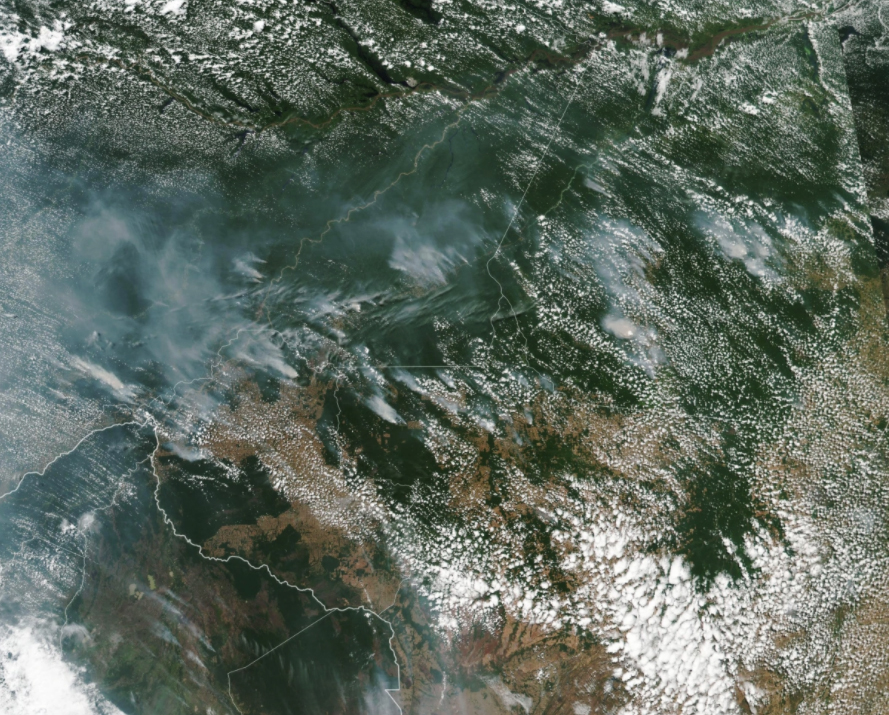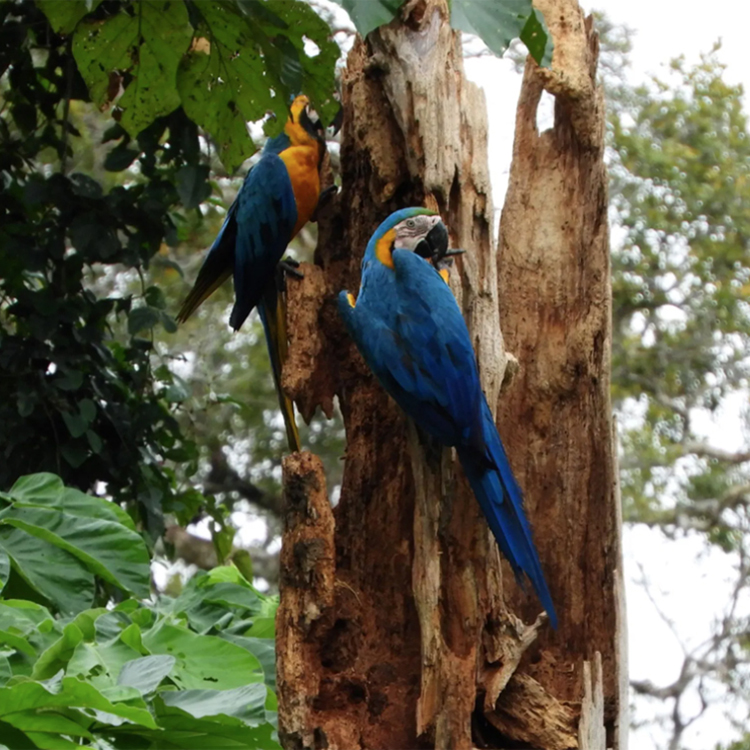.
Amazon Burning: How Earthwatch’s Research is Helping to Conserve the Amazon and Reduce Fires
By Dr. Richard Bodmer, Earthwatch Lead Scientist and Professor at the Durrell Institute of Conservation and Ecology, University of Kent
The recent news of fires throughout the Amazon has alarmed the world. In these times of increasing climate change, the last thing we need is the Amazon burning, releasing megatons of carbon and destroying the Earth’s largest terrestrial carbon sink. The worst burning is happening in Brazil, but Amazon forests are also burning in Colombia, Bolivia, and Venezuela, with less burning happening in Peru, Ecuador and the Guianas.
.

(NASA Earth Observatory images by Lauren Dauphin, using MODIS data from NASA EOSDIS/LANCE and GIBS/Worldview and VIIRS data from NASA EOSDIS/LANCE and GIBS/Worldview, and the Suomi National Polar-orbiting Partnership.)
.
Decades of research conducted by Earthwatch volunteers and scientists Richard Bodmer and Tula Fang in the Peruvian Amazon of Loreto has led to results that have influenced policies that are helping to conserve the rainforests, and thus results in less burning. Unlike many regions of the Amazon, Loreto is not burning, but why? Research conducted by Earthwatch is showing that conservation strategies based on the involvement of local people in community-based initiatives are leading to large-scale rainforest conservation in western Amazonia. Loreto is the largest region of Peru spanning over an area of 360,000 km2 situated on the eastern slopes of the Andes and into the lowland Amazon. Currently, over 50% of Loreto is under some form of community-conservation, in regional community reserves, community co-managed national reserves and indigenous territories. It is this large network of community reserves and territories that is conserving the Amazon of Loreto and reducing fires. But this change towards community reserves has happened quite recently, and in the past, the situation was not so bright.
Back in 1984, two young biologists—Richard from the UK and Tula from Peru—joined an Earthwatch expedition in the Amazon led by the late professor of primatology Paul Garber. The research was conducted in the Tamshiyacu-Tahuayo area in Loreto that was experiencing unregulated extraction of timber, fish, and wildlife meat and pelts since the 1950s resulting in the degradation and destruction of Amazon forests. Richard and Tula continued to work on mammalian ecology in the Tamshiyacu-Tahuayo area and involved the local community, who became interested in conserving their traditional lands to halt the unregulated use by outsiders. In the early 1990s, with the cooperation of regional and national authorities, Richard and Tula helped create the first community reserve in Peru on a regional level known as the Tamshiyacu-Tahuayo Regional Community Reserve. This was a new conservation strategy for the region and many conservationists were set on fully protected areas without people, not community reserves based on sustainable use.
.



.
Agriculture, fisheries, timber, non-timber extraction and wildmeat harvests have traditionally been the major resource use by indigenous and campesino people in the Amazon. The 1990s was an experimental era where strict protection strategies were tested against community-based sustainable use strategies. The research by the PIs and their teams showed that community-based strategies were more successful at conservation in the socio-economic and cultural landscape of the Amazon. The overriding goal is to conserve the Amazon, its biodiversity and cultures through the use and management of traditional resources and providing economic resources for the local people.
Back in the 1990s, there were only two protected areas in Loreto, the Pacaya Samiria National Reserve and the Tamshiyacu-Tahuayo community reserve. The Pacaya-Samiria was run as a fully protected area and the local people were restricted from using their traditional lands. This resulted in conflict between the protected area authorities and the local indigenous people and culminated in violence and deaths, at which point the authorities changed the reserve management to a community co-managed reserve involving the local people and using Tamshiyacu-Tahuayo as the model.
By the early 2000s, research was showing how local people can conserve rainforests and have a rural economy based on sustainable use, and more and more communities wanted their lands under community management. The national and regional government and NGOs took on the community-based strategy, and in a period of a decade, the majority of the rural area of Loreto was converted to some form of community conservation, and new regional community reserves, indigenous territories, and national protected areas are being set every year.
.



,
Research conducted by Earthwatch has also shown how climate change is a major issue in the Amazon. The global community wants the Amazon conserved to reduce greenhouse gas emissions by not burning and have intact forests where trees absorb carbon. But local people are also being impacted by greater floods and droughts as the climate conditions in the Amazon are intensifying.
,
Indeed, the local people who are conserving the Amazon are the people being most impacted by climate change.
.
Research conducted by Earthwatch volunteers and scientists is showing how community-based conservation is helping to save the Amazon, but maybe also the Earth. Earthwatch research has shown that the Amazon can be conserved, the burning can stop, and an intact Amazon can again help with reducing climate change, not adding to the problem. While large-scale industrial agriculture is burning the Brazilian Amazon, a network of community-based reserves and territories is saving the Peruvian Amazon.
Be involved in saving the Amazon by joining an Earthwatch research team at the forefront of Amazon conservation. Sign up to join a team today on the expedition Amazon Riverboat Exploration.
.

(Courtesy Kimberlyn Chota)
.
.
Want to learn more about the research of Richard, Tula, and their team of Earthwatch researchers and volunteers? Join Richard for a live webinar and Q&A on October 24th at 1:00 p.m. EST. Register for the webinar today!
.
Sign up for the Earthwatch Newsletter
Be the first to know about new expeditions, stories from the field, and exciting Earthwatch news.